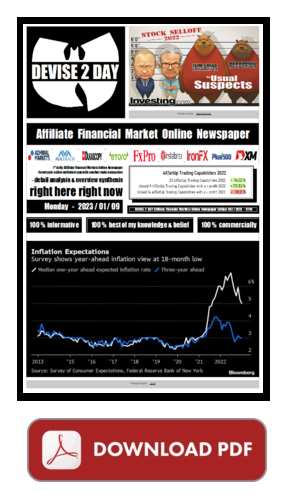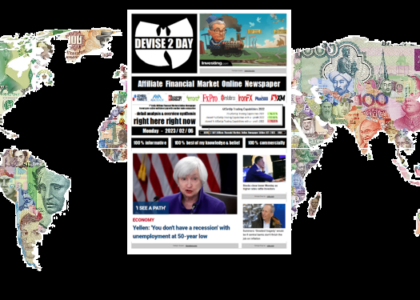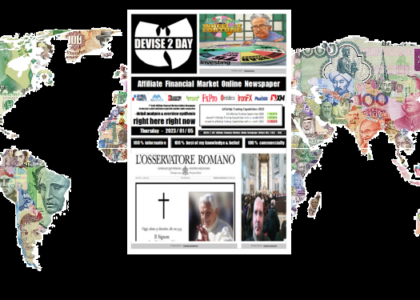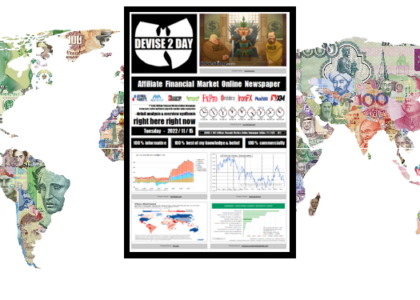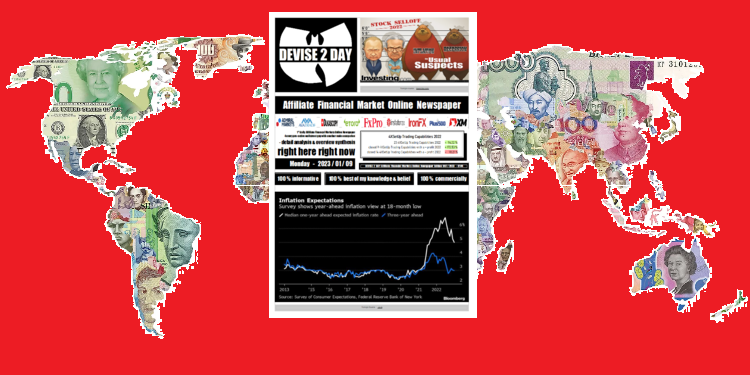
2023/01/08 (144.007) Technical Analysis – … & EUREX-FDAX1!
On Todays Monday Trading Session
European Stocks Rise To Over 7-Month High
– That`s Why We Still Stay In Our Long DAX Future
Interest Rate Increases Could Continue To Affect Our German DAX40 Index
The DAX recorded price gains in the three years before 2022. However, in 2022 too many stress factors came together, e.g. B. the war in Ukraine, rising energy prices, a higher inflation rate and a sudden change in interest rates. These factors have impacted the market, some significantly. At the beginning of the current year, the DAX was listed at 14,069 points, while the German index opened at just under 16,000 points at the beginning of 2022. It fell by around 6.6% in 2022.
As this year begins, sentiment among many shareholders and financial analysts is similarly bearish to last year. Experts expect that the stock markets will initially fall in the new year before then rising again. In their forecasts for the year, strategists from banks and fund companies had already expected a continuation of interest rate hikes before the most recent meetings of the major central banks. In the past few weeks, the Federal Reserve and the European Central Bank (ECB) finally officially announced that they intend to continue their policy of raising interest rates at the beginning of 2023.
The actions of the Federal Reserve and the ECB show that they believe the economy is strong enough to absorb higher borrowing costs and counteract inflation. However, this rising interest rate policy is likely to continue to cause problems for the stock markets. Therefore, the assessments of most colleagues and those of other well-known analysts for the beginning of 2023 are rather bearish. Which I have been opposed to since the beginning of the year! Why?
I’ll try to break it down for you so briefly and concisely, to the point, so that you know better what to do (buy/sell or not to trade)…
The EUR And/Or The EUR Yield Curve Is An Attractive, Relatively Safe Investment For The 1st Time Since Before The US Lehman Brothers Collapsed In 2008
While last year a strong USD and an increasingly expensive US yield curve was something of a safe haven due to burgeoning inflation and/or Russia’s war of aggression against Ukraine, price action 2023 is likely to develop differently. And then hopefully in favor of the DAX40Index. Because I am assuming that the FED has already been as restrictively hawkish as the other major central bank, the ECB, still has to do its homework in 2022 in terms of combating US inflation in 2023. Which is why from today’s perspective, at the beginning of 2023, and then above all for all traders outside the euro area, the euro zone is an attractive investment. And that for security-oriented investors, due to the numerous Euro Yield Curves. And/Or also in the form of the DAX 40 index, of you have an good risk apetite – and figuratively speaking, wanting to bite into stocks of German corporations, just want to invest, just want to trade, all of which have hardly any financing costs compared to the technology-heavy Nasdaq due to a super conservative corporate management due to a high interest rate on both sides of the ocean should be. Of course, not only the risk but also the chance om nasdaq is higher. I have also formulated a long 4XSetUp for this. However, since the danger of an impending recession is still being suggested by many colleagues, which I also believed in, in the summer of 2022, for the second half of 2022, but luckily didn’t happen, I am not assuming a recession for the year 2023 today the end. But also not from interest rate cuts in the USA, let alone in the euro zone. So that in 2023 we will have to reckon with negative nominal real yields in both the USA and the EUR area. As well as a stafglation. From which the USA should, in the best-case scenario, work its way out end of 2023. That`s why, in this basic context, long CBOT_MIN!, EUREX:FXDAX1!, EURUSD and/or NASDAQ:TSLA 4XSetUps.
German 10-Year Bund Yield Hovers More Or Less Around 2.3% At The Start Of 2023
While UK 10-Year Bond Yield Hovers Around 3.5% And/Or US 10-Year Treasury Yield Consolidates Above 3.7%
The yield on the German benchmark 10-year Bund hovered at 2.3%, well below an over 11-year high of 2.6% touched on December 30th as investors hope inflation has peaked. Preliminary data showed Euro Area inflation rate fell by more than expected to 9.2% in December, returning to single digits for the first time since August, reflecting slowdowns in Germany, France, Italy and Spain. Meanwhile, Bank of France chief Francois Villeroy de Galhau said the peak for borrowing costs may be reached toward the summer. Still, concerns over a global economic recession mounted amid rising borrowing costs and stubbornly high inflation. Also, expectations of increasing government funding and falling excess liquidity will likely continue to support yields amid increased public spending to fight the adverse impact of the energy crisis.
The yield on the UK’s 10-year Gilt stabilized around 3.5% at the start of January, down from last week’s two-month high of 3.7%, as CPI data from Europe’s largest economies suggested inflationary pressures cooled sharply in December. Meanwhile, increasing bond supply and fears that the global economy might head into a severe recession due to a hawkish rhetoric from major central banks should continue to support bond yields. Policymakers in the US and Europe signaled more interest rate hikes would be delivered this year to combat inflation. Locally, the Bank of England said inflation had already peaked, suggesting there could be a pause in the current policy tightening. Data showed UK CPI inflation fell to 10.7% in November, from a 41-year high of 11.1% in October.
The US 10-year Treasury note yield, seen as a proxy for global borrowing costs, consolidated above 3.7% as investors digested minutes from the FOMC December meeting. Policymakers confirmed their previous hawkish signals that interest rates must continue to rise and remain at a restrictive level for a prolonged period to bring inflation down to target. However, investors are not blindly buying this tightening narrative, with speculation about a recession prompting bets that the Federal Reserve will cut rates later this year. Some sectors of the US economy, including housing and industry, have already flashed recessionary signs. Now, all eyes turn to the nonfarm payroll report on Friday for clues about the next move in interest rates.
However, On Todays Monday Trading Session European Stocks Rise To Over 7-Month High
European equity markets extended gains on Monday, with the benchmark Stoxx 600 rising 1% to 449, the highest since end-April, led by gains in technology stocks amid growing optimism over China’s borders reopening and easing interest rate hike worries in the US following Friday’s data showing a slowdown in wage growth. Domestically, the German DAX added 1.4% to 14,817, the highest since March. On the corporate front, drugmaker AstraZeneca agreed to buy US-based CinCor Pharma in a $1.8 billion deal to strengthen its pipeline of heart and kidney drugs, while Vodafone said it was set to cash in €1.7 billion from the sale of its Hungarian unit. Meanwhile, videogame stocks Frontier Developments and Devolver Digital posted disappointing trading updates and engineering contractor Keller warned its annual operating profit would come in below expectations after uncovering financial fraud at its Australia business.
good morning, good day, and/or good night
at whatever time, wherever you are !
right here right now :

